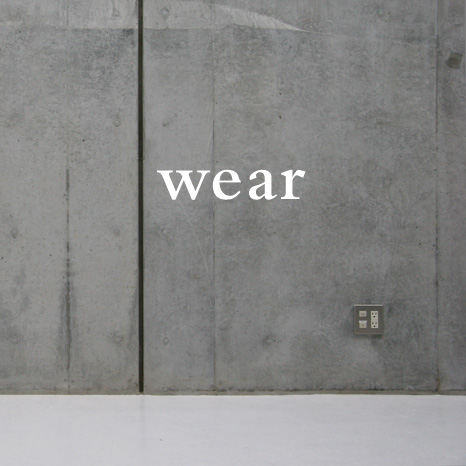beds. dormitory feel. luggage. blanket. dishes. showers? toilets? they’re in a group but also individuals at the same time. artwork and also receivers of info at the same time. receiving more than giving out. selection. simple. profession. location. possible interest in the project. possibility of having an effect on their life. parents? eighteen to sixty. preference of the embassy. people who can determine their will. biggest worry. how to select people. where to get them. met with embassy first. documentary film. sixteen teams all over the country. already six-hundred hours of footage. people also need to answer ninety-nine questions from fake. about germany. the west. fantasy. religion. work through e-mail. make participants start to participate. the first step. already a part of it. even if the visa process may fail. june thirteen. announcement of the artists of documenta twelve. the project is impossible to keep a secret. logistically. not boat-people. boeing-people. usb-stick. memory stick. memory of today. infrastructure hardware. network infrastructure. upload. download. twenty computers. printers. a working office space that people can freely use. create an information landscape. info-booth. usb-stick will contain the memory of one individual. corporate gift. two sticks. one at start. upload. download. use. then at departure take in stick and give a new blank one. keep this memory, this accumulated knowledge. the used one you keep as a trace of this experience. memory of participant and memory of event. a thousand and one different eyes. one may be completely into all the artworks. another may not give a damn. i’ll be a cook. a barber. the teacher. informational storage. where to eat? where to sleep? what to buy? what to visit? most will not speak english or german. need information. mapping. computer technicians? doctor? impose on top of kassel another layer of information. modeled after a map of china. your own city in any city. when it’s gone it’s gone. traces in mind not in physical space. why products. so much stuff. unnecessary. what will be related to the stick? information centre. we want to be active. them to be active. interface architecture. set up a condition. we don’t know what’s going to happen. we provide a possibility. most fascinating thing. usb one GB. one thousand and one GB. a photograph of each? that’s the studio photo! ask people to do it themselves. assuming that most people have a camera. otherwise provide twenty or so cameras. each group roughly two-hundred. on the planes forty here. sixty there. some from beijing. some from shanghai. and insurance. one-thousand yuan per person. plane tickets non-refundable. over twenty people to coordinate the work. will have volunteers in kassel. can probably have computers and technicians. map-office sets up scenario. something personal. emphasize individual. the more unpredictable, unforeseeable elements we put in the better. when i started i didn’t know it was going to be like this. chinese people get very emotional. one girl wrote me that one day she was standing on a traffic overpass and started thinking about the fact that she will partake in this project and that she was so happy it made her cry. she said she never knew she could cry out of happiness.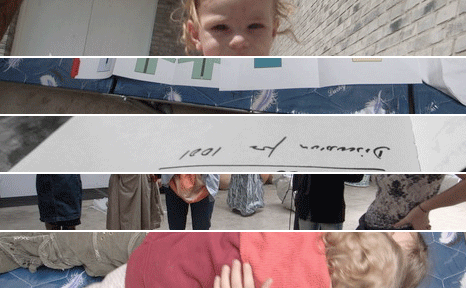 image edited from: http://blog.sina.com.cn/aiweiwei
image edited from: http://blog.sina.com.cn/aiweiwei
not-yet-expired activity
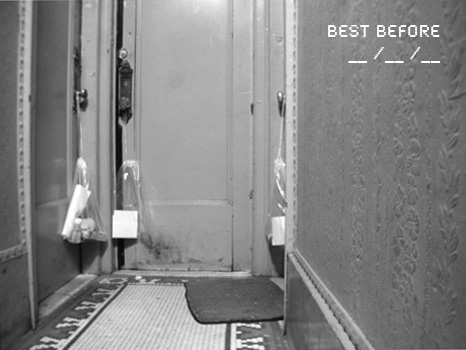 [readings for Best Before; this is what we’re up to; arnhem, boston and beijing in new york, August-October 2006]
[readings for Best Before; this is what we’re up to; arnhem, boston and beijing in new york, August-October 2006]
“The separation between a thing and its environment cannot be absolutely definite and clear-cut; there is a passage by insensible gradations from the one to the other; the close solidarity which binds all the objects of the material universe, the perpetuality of their reciprocal actions and reactions, is sufficient to prove that they have not the precise limits which we attribute to them. Our perception outlines, so to speak, the form of their nucleus; it terminates them at the point where our possible action upon them ceases, where, consequently, they cease to interest our needs. Such is the primary and the most apparent operation of the perceiving mind: it marks out divisions in the continuity of the extended, simply following the suggestions of our requirements and the needs of practical life.” —from Matter and Memory, Bergson
“We ought to think of the historical world according to this model. Why ask if history is made by men or by things, since it is obvious that human initiatives do not annul the weight of things, and the ‘force of things’ always acts through men? It is just this failure of analysis, when it tries to bring everything down to one level, which reveals history’s true milieu. There is no ‘last analysis,’ because there is a flesh of history in which (as in our own body) everything counts and has a bearing — the infrastructure, our idea of it, and above all the perpetual exchanges between the two in which the weight of things becomes a sign as well, thoughts become forces, and the balance of the two becomes events. It is asked, ‘Where is history made? Who makes it? What is this movement which traces out and leaves behind the figures of the wake?’ It is of the same order as the movement of Thought and Speech, and, in short, of the perceptible world’s explosion within us. Everywhere there are meanings, dimensions, and forms in excess of what each ’consciousness‘ could have produced, and yet it is men who speak and think and see. We are in the field of history as we are in the field of language or existence.”These transformations of private into public, of events into meditations, of thought into spoken words and spoken words into thought, this echo coming from everywhere makes it such that in speaking to others we also speak to ourselves, and speak of what exists. This swarming of words behind words, thoughts behind thoughts–this universal substitution is also a kind of stability.” —from Signs, Merleau-Ponty
“Take, for example, a small drawer, which the carpenter has made for the convenience of some housefold. With the passage of time, the actual form of this drawer is surpassed by time itself and, after the decades and centuries have elapsed, it is as though time had become solidified and had assumed that form. A given small space, which was at first occupied by the object, is now occupied by solidified time. It has, in fact, become the incarnation of a certain form of spirit. —from Kinkakuji, Mishima
Posted by secretary | reply »paper insert
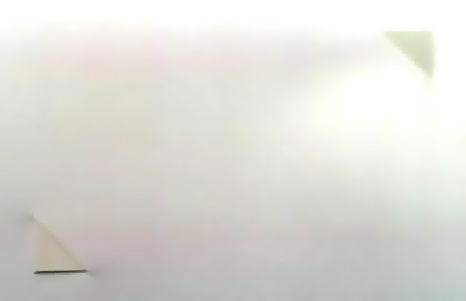 iwishicoulddescribeittoyoubetter number two is now being distributed. (the first, we later realised, was wear) unbeknownst continuity. you can receive: photographs on card | music | about the music | about sixteen people | phrases and, or, a word. sixteen people in our lives to share with one hundred. to find out more or for your copy of this limited edition series, let o know.
iwishicoulddescribeittoyoubetter number two is now being distributed. (the first, we later realised, was wear) unbeknownst continuity. you can receive: photographs on card | music | about the music | about sixteen people | phrases and, or, a word. sixteen people in our lives to share with one hundred. to find out more or for your copy of this limited edition series, let o know.
但愿我能为您æ绘得更好-第二册”现已开始å‘放(没有想åšæˆç³»åˆ—,但当第二册完æˆä»¥åŽï¼Œwear自然æˆä¸ºæœ¬ç³»åˆ—的第一册)。这是æ„外的继ç»ã€‚您将会得到:åšæˆå°å¡ç‰‡çš„照片ã€ä¸€äº›éŸ³ä¹ã€å…³äºŽè¿™äº›éŸ³ä¹ã€å…³äºŽåå…个人ã€ä¸€äº›è¯ç»„和(或)一个å—。但愿能和一百人分享我们生活ä¸åå…个人的故事。如果您想了解更多或得到æ¤é™é‡å‘行系列,请给oæ¥ä¿¡ã€‚
Posted by secretary | reply »wear Posted by secretary | more »
京都を知るã¨ã„ã†ã“ã¨: a project document, getting to know your city, we walk in circles every day
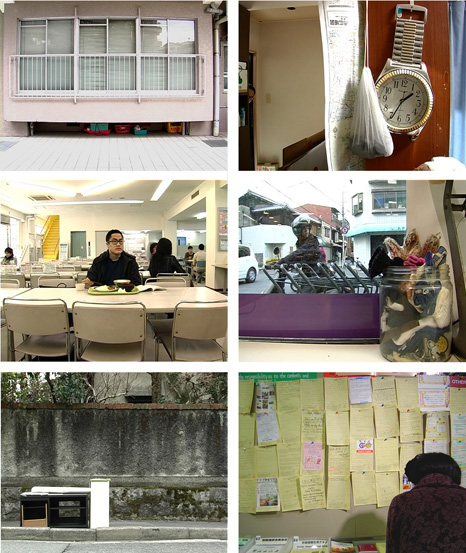
ã“ã®ãƒ—ãƒã‚¸ã‚§ã‚¯ãƒˆã¯ã€ã€Œpassing通用ã™ã‚‹ã“ã¨ã€âˆ’周囲ã®äººã«æ°—ã¥ã‹ã‚Œãªã„よã†ã«ç‰¹å®šã®å ´æ‰€ã«å…¥ã‚Šè¾¼ã‚‚ã†ã¨ã™ã‚‹ã“ã¨ã€å¤±æ•—ã™ã‚‹ã¨è§£ã£ã¦ã„㪠ãŒã‚‰ã‚‚京都 ã®æ—¥å¸¸ç”Ÿæ´»ã«å¿ã³è¾¼ã‚‚ã†ã¨ã™ã‚‹ã“ã¨â€ã®å•ã„ã‹ã‘ã¨ã—ã¦é–‹å§‹ã•ã‚Œã¾ã—ãŸã€‚ã—ã‹ã—ã€ã€Œè¨€èªžã€ã€ãã—ã¦ã€Œå‡ºè‡ªã€ã«å¯¾ã™ã‚‹å•ã„ã‹ã‘ã¯ã€ã‚ˆã‚Šã„ã£ãã†ã‚¢ã‚¤ãƒ‡ãƒ³ãƒ†ã‚£ ティæ„è˜ã‚’高ã‚ã‚‹ã“ã¨ã«ãªã‚Šã€ãã—ã¦ã€Œpassingã€ã¯ã€Œpassing back and forthã‚„ã‚Šã¨ã‚Šã‚’ã™ã‚‹ã“ã¨ã€ã¨ã„ã£ãŸæ„味ã§ã‚ˆã‚Šç§ã®é–¢å¿ƒã‚’ã²ãよã†ã«ãªã‚Šã¾ã—ãŸã€‚言語やæ„味ã®äº¤æ›ã¯ã€ç§ã«ã¨ã£ã¦äººã‚„ã‚‚ã®ã€å ´æ‰€ã®é–“ã®è·é›¢ã‚’ãŸã©ã‚‹ ãŸã‚ã®æ‰‹æ®µã¨ãªã£ãŸã®ã§ã™ã€‚ã©ã“ã¸è¡Œã“ã†ã¨ã‚‚−アーãƒãƒ³ãƒ»ãƒ—ランナーã€æ—…行者ã€ã‚ã‚‹ã„ã¯åœ°å…ƒä½æ°‘ã€ã©ã®ã‚ˆã†ãªè€…ã¨ã—ã¦ã§ã‚れ−ã€ç§ãŸã¡ã¯è‡ª 身をå–ã‚Šå·»ã環境ã¨é–¢ä¿‚ã‚’å–ã‚Šçµã¼ã†ã¨ã™ã‚‹ 生æ¥ã®ã€ãã—ã¦æœ¬èƒ½çš„ãªãƒžãƒƒãƒ”ング・プãƒã‚»ã‚¹ã‚’æŒã£ã¦ã„ã¾ã™ã€‚ã—ã‹ã—ã€åœ°å›³ãŒç§ãŸã¡ã«ã‚‚ãŸã‚‰ã™æœ€å¤§ã®éŒ¯è¦šã¨ã¯ã€åœŸåœ°ã¯æ•´ç„¶ã¨ã—ãŸå›³é¢ã‚„æ ¼åã§è¡¨ç¾ã•ã‚Œã€å· ã¯å›³å¼åŒ–ã•ã‚ŒãŸå½¢ã¨ã—ã¦è¡¨ç¾ã•ã‚Œã¦ã„ã‚‹ã«ã‚‚é–¢ã‚らãšã€ãã“ã«ä¿¡é ¼æ€§ã‚„具体的ãªå®¢è¦³æ€§ãŒã‚ã‚‹ã¨æ€ã‚ã›ã¦ã—ã¾ã†ã“ã¨ã§ã™ã€‚実際ã€éƒ½å¸‚ã®è¡¨è±¡ã¨ã—ã¦ã®åœ°å›³ã¯ã€ç©º é–“ã«å›ºå®šã•ã‚ŒãŸåœ°ç‚¹ã®è»Œè·¡ã§ã‚ã‚‹ãŒæ•…ã«ã€Œç‰©èªžã€ã®å¤šæ§˜æ€§ã‚’示ã—ã¦ã„ã‚‹ã¨ã‚‚ã„ãˆã‚‹ã®ã§ã™ã€‚ã—ãŸãŒã£ã¦ã€äº¬éƒ½ã‚’å¦ã¶ã“ã¨ã¯ã€å®Ÿéš›ã®å¤‰æ•°ã‚’知るã¨ã„ã†ã‚ˆã‚Šã€åŒæ™‚ ã«èµ·ã“る「活動ã®çµæžœã€ã«ã¤ã„ã¦çŸ¥ã‚‹ã“ã¨ã«ãªã‚‹ã®ã§ã™ã€‚åŒã˜æ„味ã«ãŠã„ã¦ã€ã‚¢ã‚¤ãƒ‡ãƒ³ãƒ†ã‚£ãƒ†ã‚£ã¯è¡Œç‚ºã«åŸºç¤Žã‚’ç½®ã„ã¦ã„ã¾ã™ã€‚ミシェル・ド・セ ルトーã¯ã€Œä½•ã‹ã‚’ã—よã†ã¨ã™ã‚‹æ„å¿—(un vouloir-faire)ã€ã«ã‚ˆã£ã¦äººé–“を評価ã—ã¾ã™ã€‚ãã—ã¦ãã®æ„å¿—ã¯ç§ãŸã¡ãŒã€æ™®æ®µç¹Šç´°ãªãƒ¡ã‚¿ãƒ»ã‚³ãƒŸãƒ¥ãƒ‹ã‚±ãƒ¼ã‚·ãƒ§ãƒ³ã®ä¸ã§ãƒãƒ©ãƒ³ã‚¹ã‚’ã¨ã£ã¦ã„ã‚‹ç¾ å®Ÿã¨é¡˜æœ›ã€ã‚ã‚Šã®ã¾ã¾ã®ã‚‚ã®ã¨åŠ å·¥ã•ã‚ŒãŸã‚‚ã®ã€ä¼ãˆã‚‰ã‚ŒãŸã‚‚ã®ã¨å—ã‘å–られãŸã‚‚ã®ã®é–“ã«ã‚るギャップã«ã‚ã‚‹ã¨ç§ã¯è€ƒãˆã¾ã™ã€‚ãã“ã§ã¯ã€ã‹ã¤ã¦ç¢ºå®Ÿæ€§ã‚’æŒã£ ã¦ã¨ã‚‰ãˆã‚‰ã‚Œã¦ã„ãŸæ™‚é–“ã¨å ´æ‰€ã¯ã‚‚ã¯ã‚„確実性を失ã†ã®ã§ã™ã€‚â€ãã—ã¦ã€ç§ãŸã¡ã¯æ—¥ã€…円をæã„ã¦ã„ã‚‹ã®ã§ã™ã€‚This project began as a question of ‘passing’, of trying to insert oneself into the situation invisibly, of slipping into the daily life of Kyoto in a premeditated failure of assimilation. But very quickly, language and the question of nativity led to a much more relational sense of identification, and ‘passing’ became much more interesting in the sense of ‘passing back and forth’. Language and the exchange of meaning became the tools with which to trace the distances between person, object and place.Wherever we go, whether as tourist, native resident or urban planner, there is an inherent and instinctive mapping process with which we engage our surroundings. But the greatest illusion of the map, however, is its misleading sense of authority, of concrete objectivity in the face of a neatly laid out plan, a grid or a logically designed river. In fact, the map, as an image of the city, is a multiplicity of narratives inasmuch as it is a trajectory of points fixed in space. To learn about Kyoto becomes less about a real mapped variable than a simultaneous ‘result of activities’.In the same sense, identity becomes based upon production. de Certeau measures being by “un vouloir-faire”, or will to do, and it is within these gaps between reality and aspiration, natural and fabricated or transmitted and received that we find the rhythms of a delicate meta-communication. The former rooted-ness of time and place are no longer valid. We walk in circles everyday.
Posted by 丫 | reply »it’s darker, more contrast-y and some things get crossed out, but “it’s something we’re supposed to be blowing new life into”.
 We’ve moved. But the offer may still be valid. Send your e-mail requests to o[at] or post to: People’s Republic of China 100010 Beijing, Dongcheng District, Douban Hutong, Bldg 3, Entrance 6, No 901. ä¸å›½100010北京东城区豆瓣胡åŒ3楼6é—¨901室. If you write in chinese it will come faster. Previous recipients include: bernadette & lorena, jasmina, anouchka & john and ron-li & vali. mr. white and jj, we haven’t forgotten you (or the 10 euros). we apologise for the delay, the scenery keeps changing.
We’ve moved. But the offer may still be valid. Send your e-mail requests to o[at] or post to: People’s Republic of China 100010 Beijing, Dongcheng District, Douban Hutong, Bldg 3, Entrance 6, No 901. ä¸å›½100010北京东城区豆瓣胡åŒ3楼6é—¨901室. If you write in chinese it will come faster. Previous recipients include: bernadette & lorena, jasmina, anouchka & john and ron-li & vali. mr. white and jj, we haven’t forgotten you (or the 10 euros). we apologise for the delay, the scenery keeps changing.
brinco
lucio and judi jump together.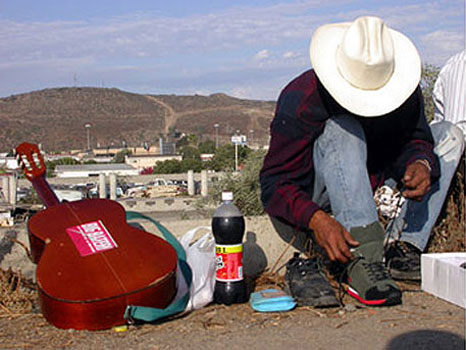 . .
. .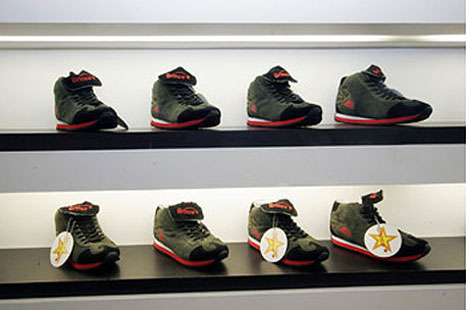
daily fable
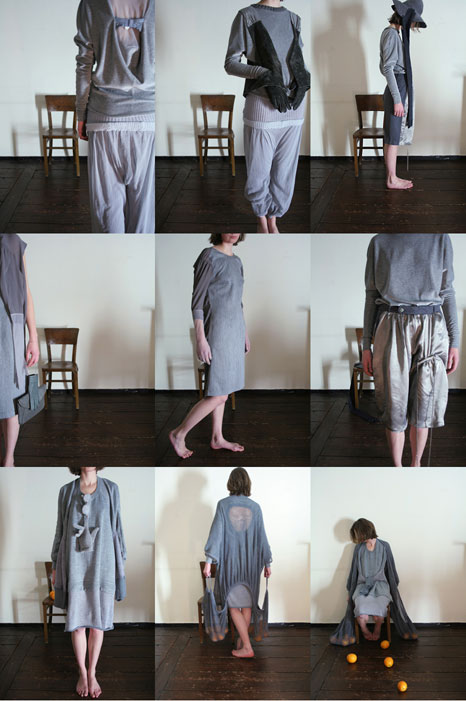 anyway …fall 2005. ten items of clothing including accessories are reflecting my personal association about daily clothing on the street. those fantasies are basically made out of the gesture of hands and relation between body and bag. by twisting daily subject and replacing it on its original place, i wish the exchanges between wearer and other people would occur.
anyway …fall 2005. ten items of clothing including accessories are reflecting my personal association about daily clothing on the street. those fantasies are basically made out of the gesture of hands and relation between body and bag. by twisting daily subject and replacing it on its original place, i wish the exchanges between wearer and other people would occur.
